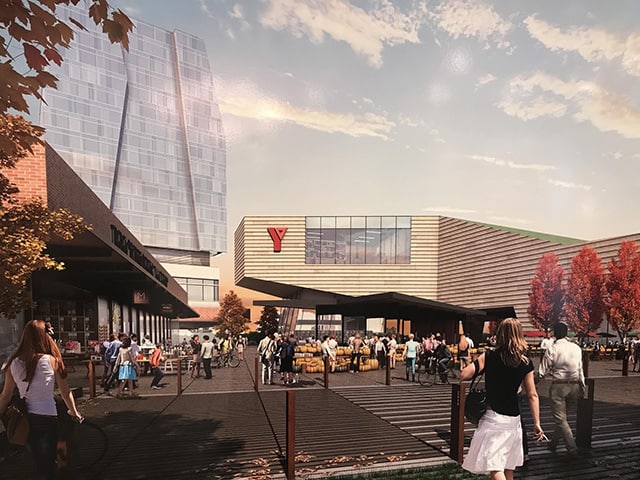Monumental Redevelopment Project Planned for Port Credit
Published May 1, 2017 at 7:40 pm

Earlier this year, Mississauga City Councillor Jim Tovey announced that Imperial Oil Ltd. signed an agreement of purchase and sale with Port Credit West Village Partners Inc (WVP). for the purchase of the former Texaco refinery lands located at 70 Mississauga Road South.
Needless to say, the news was huge.
The massive swath of land has been completely vacant for roughly three decades after operating as a brickmaking plant and then, eventually, an oil refinery. Now, the 72-acre site is set to be rejuvenated in partnership with the city with input from local residents and stakeholders.
It’s slated to undergo serious redevelopment to one day function as a vibrant, walkable and urbane residential and commercial space that will house up to 5,000 residents, create thousands of jobs and generate millions of dollars in tax revenue.
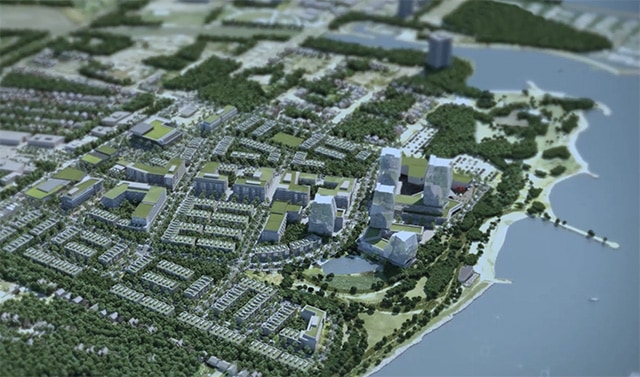
Today, WVP unveiled a draft plan for the ambitious project at The Waterside Inn in Port Credit to a sizeable crowd of attendees (many of whom had questions about the environmental remediation process, but more on that later). The event also featured appearances by Tovey, Mayor Bonnie Crombie, Mississauga City Manager Janice Baker and other community representatives.
For those who are unaware, WVP is a joint venture with participants from such developers as the Kilmer Group, Dream Unlimited Corp., Diamond Corp., and FRAM + Slokker. The organization has developed a mixed-use master plan that builds upon the city’s Inspiration Port Credit plan.
“We’re determined to deliver a special community that will raise the bar for architectural and design excellence and to transform this section of the Port Credit shoreline into a dynamic waterfront community with places to live, work, shop and play,” said WVP Spokesperson Ken Tanenbaum, Vice Chairman of Kilmer Group, at the event.
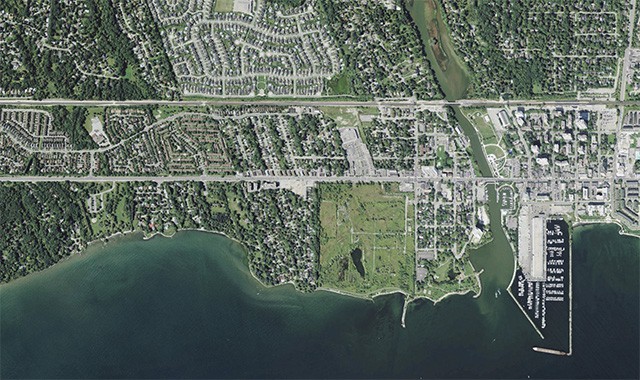 As for the specifics, WVP says its master plan is “dedicated to revitalizing the 72-acre site in a manner that will fulfill important city building objectives of architectural excellence, connectivity, high quality public realm, community gathering spaces, and a series of parks that collectively enhance the Mississauga waterfront experience—all informed by a thoughtful environmental strategy.”
As for the specifics, WVP says its master plan is “dedicated to revitalizing the 72-acre site in a manner that will fulfill important city building objectives of architectural excellence, connectivity, high quality public realm, community gathering spaces, and a series of parks that collectively enhance the Mississauga waterfront experience—all informed by a thoughtful environmental strategy.”
While the pitch sounds great, it’s important to note that waterfront revitalization is–sales-y tone aside–by and large a good thing for any growing city. While there are picturesque spaces along the Mississauga waterfront, it–much like Toronto–hasn’t made the most of its valuable and scenic real estate (a mistake many Halton region municipalities haven’t repeated).
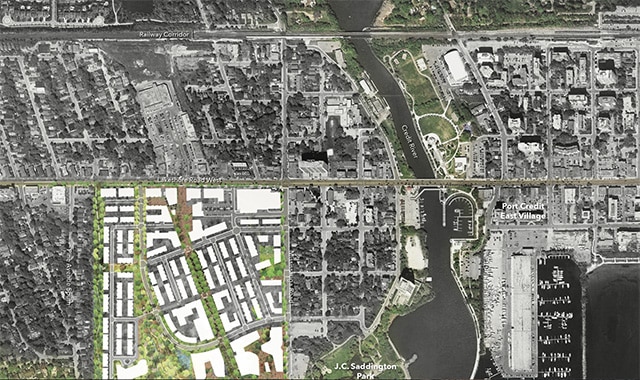
So, what are some of the highlights of WVP’s draft master plan?
-
Approximately 2500 housing units (home to +/- 5000 residents), with a range of built form structures, including townhomes, mid rise and high rise buildings that respect views to the lake
-
Approximately 200,000 square feet commercial development (both retail and office)
-
Approximately 1000 jobs in construction and support services during the development process
-
Estimated 1000 jobs post construction
-
Estimated $17 Million realty taxes/year generated for city of Mississauga (at 2017 rates)
-
A new waterfront park with a beach and ecological gardens geared to the natural shorelines of Lake Ontario and the Credit River, completing a fully connected system of waterfront parks by delivering the missing link from J.C. Saddington Park west to the Brueckner Rhododendron Gardens
-
Four green corridors that will link the waterfront to Lakeshore Road
-
Neighbourhood gathering places, with a series of parks, community amenities, diverse vegetation, play areas and meeting points
-
Proposed Community Centre-possibility of a partnership with YMCA and Evergreen in The Campus neighbourhood
-
Street system designed at an angle to blend with patterns of the existing neighbourhoods to the west and the north, adding variety and offering open views to the waterfront
-
Balanced mobility choices with an intricate pedestrian network and bike routes to accommodate all forms of movement
-
Rejuvenate Lakeshore Road West, creating a main street that mirrors the streetscapes east and west of the site, punctuated with trees and gathering spaces
-
The Village Square Central Street Promenade is the site’s vibrant central spine and promenade, with a series of street squares that will draw the main street buzz of Lakeshore Road West down into the heart of the neighbourhood and ultimately to the lake
As far as timelines go, site works could begin as early as fall 2017 and construction could kick off in 2019.
When it comes to public engagement, WVP says it will begin a series of public meetings as early as this spring to introduce the plan to residents and gather their feedback and input.
While there will no doubt be concerns about building heights and sun blockage (those are always common chords of discontent strummed at community meetings on new or proposed developments), a few media attendees asked a pertinent and important question at the unveiling: What will the environmental remediation process look like?
Since the lands were once industrial in nature, it’s natural to be concerned about how the area will be rehabilitated and made safe for residential development.

One representative offered a few general (but some might say vague) assurances that regulations already in place at the provincial level through the Ontario Brownfields Regulation process will help guide the redevelopment project. Attendees were also assured that WVP is working in conjunction with the Ministry of the Environment to ensure the area is repurposed appropriately.
There were also questions about whether public transit will be enhanced to serve a brand new community of 5,000 residents. Crombie took on the transit query, saying that the city is evaluating potential transit plans that will address future growth.
At the city level, Crombie appeared excited about the initiative and its place-making implications for city that’s already well on its way to urban densification.
“Transit is fundamental to the future of Port Credit, Mississauga and our city-building efforts,” Crombie said. “This new development is walking distance from the Port Credit GO Train Station – an important transit hub that also offers MiWay bus service and which will also have one of 22 new stops along our new Hurontario Light Rail Transit line – the north-south spine of Mississauga that stretches 22 kilometers from right here Port Credit into downtown Mississauga heading north into Brampton.”
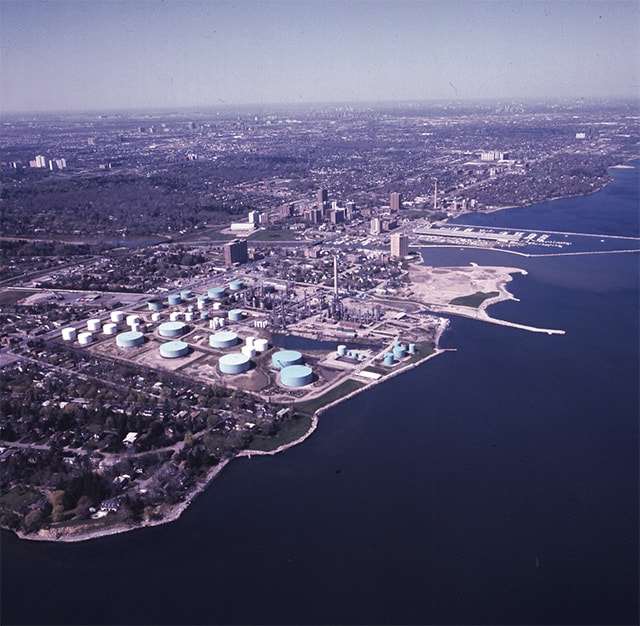
Crombie, Tovey and the city do deserve accolades for embracing and executing an ambitious vision, especially since the GTA is growing and people are looking for urban lifestyles outside of Toronto’s downtown core.
“Effective urban planning is our responsibility and our legacy to future generations. It’s how council will be judged. The decisions we make today will affect our future in a profound way,” Crombie added. “We have undertaken a series of comprehensive studies and community consultations – forums for residents and business to share their intimate and local knowledge. Together, we’re envisioning a bright new future for Mississauga.”
It’ll be interesting to see how the public meetings play out and how many questions emerge about financing, development, environmental safety, building height, sun blockage and transit.
